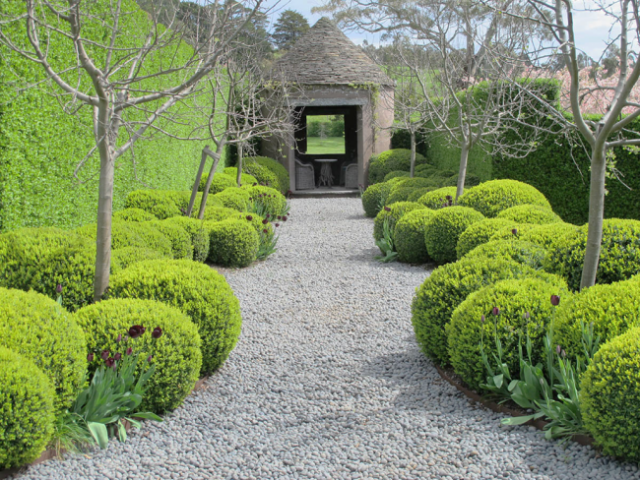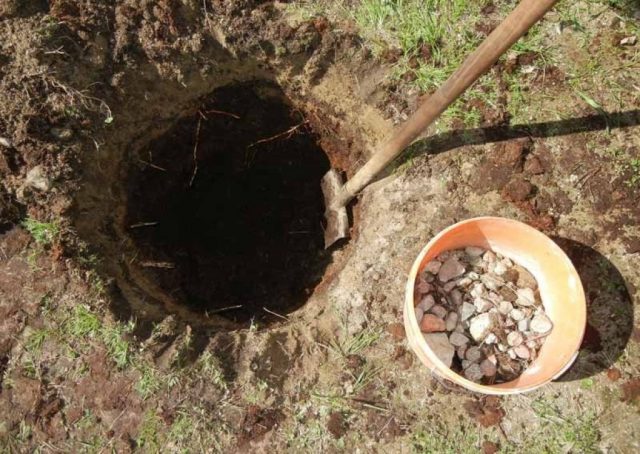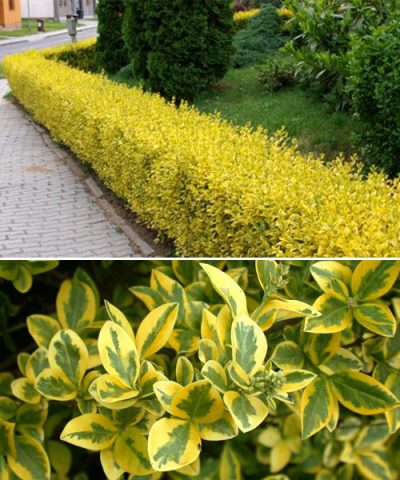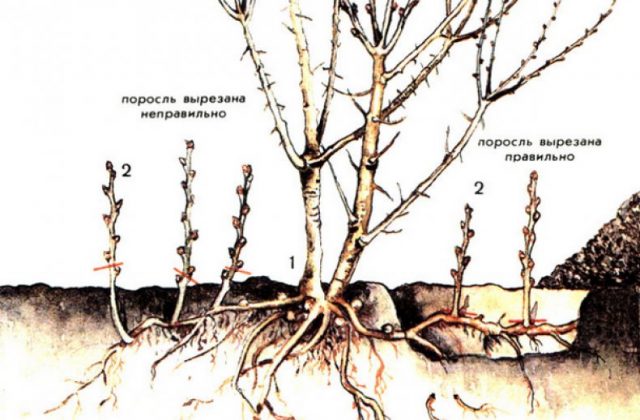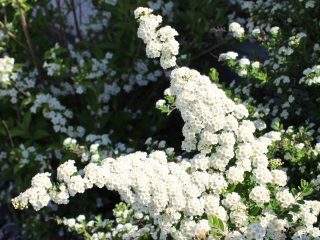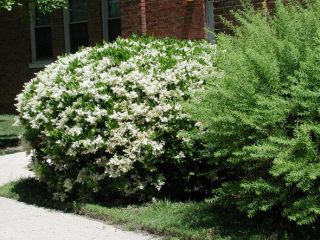Content
Common privet is a close relative of lilac. Its inflorescences are not so attractive, but the shrub is still in demand. It is undemanding in care and tolerates pruning well, with which you can give privet the most unusual shapes.
Description of common privet
Common privet belongs to the Olive family. The description says that these are evergreen or deciduous plants. The photo shows that the height of the bush is on average about 2 m, the crown is spreading, no more than 1 m. At home, trees can reach 6 m. The distribution halo of privet:
- Australia;
- North Africa;
- China;
- Japan;
- Taiwan.
The leaves of the bush are dense, leathery, dark green on the outside and lighter on the inside. They are located opposite on the branches. The inflorescence is in the form of a panicle, loose, up to 18 cm long. The petals are painted white. Flowering is long-lasting, starting from the beginning of summer and lasting more than 3 months.Throughout this period, the garden is enveloped in a characteristic aroma. After flowering, common privet produces small fruits, dark blue or black. They have few seeds.
Common privet in landscape design
Ornamental trees and shrubs of common privet are widely used in landscape design. They are usually grown as a hedge, since the crown of the plant is spreading and creates a dense barrier. However, they also look good when planted alone or in a group with other evergreen trees.
Recently, bonsai have been grown from privet. The shrub lends itself well to shaping, it has flexible shoots and an excellent ability to recover after pruning.
Planting and caring for common privet
Common privet is an unpretentious shrub that grows well in partial shade, but requires bright light for lush flowering. Direct sunlight is contraindicated.
The type of soil for the shrub does not matter much; it grows well in any area. However, experienced gardeners have noticed that in neutral or slightly alkaline soil the decorative qualities of privet are especially pronounced.
You can plant and replant shrubs throughout the entire growing season, but it is best to plan the work for the first half of autumn. The timing may vary in different regions; the main thing is to finish planting 2 weeks before the first frost. In the middle zone this is mid-September - early October.
Preparing seedlings and planting area
The area for planting common privet is prepared in advance. It is best to do it a month before the planned work.The soil is well dug up and cleared of weed, enriched with humus, turf soil and sand is added as a leavening agent. After this, planting holes are prepared:
- Their size is one third larger than the root system of the seedling.
- Usually a hole of 65 x 65 cm is made for planting.
- The bottom of the pit is well drained, then half filled with nutritious soil mixed with mineral fertilizers.
- The hole is left for a while to allow the earth to settle.
A common privet seedling is prepared for planting in different ways. It all depends on the time of year when the work will be carried out. In spring, shrubs are purchased with a closed root system, so they do not need special preparation. In autumn, privet seedlings are sold with bare roots, so before planting they need to be properly prepared:
- shorten the shoots by 1/3, cut off some of the roots;
- place the seedling in a bucket of water, where a growth stimulator is added;
- Inspect the roots, cut out dry and damaged roots.
Before planting, seedlings need to be soaked for at least 8 hours so that the root system is saturated with moisture. It depends on how quickly the shrub takes root in a new place.
Planting common privet
The planting procedure is simple; the seedling is lowered into the prepared hole, the roots are straightened and sprinkled with fertile soil without fertilizers. The soil is well compacted and watered abundantly. To prevent it from drying out, it is mulched with a thick layer of humus.
If you need to plant several plants, then leave 60-70 cm between them. For a hedge, the distance is reduced to 40 cm between seedlings. Set aside at least 1 m from buildings.
Watering and fertilizing
In the conditions of the middle zone, common privet is grown with virtually no watering; the bush only needs natural moisture. In arid regions, the soil under the plant will have to be moistened 3-4 times during the growing season.
The main rule is that watering should be rare but plentiful. The soil needs to be wetted to the full depth of the roots. 30-40 liters of water are consumed per plant. Common privet needs moisture especially acutely during the ripening period of the berries. This watering is considered the last, it is also moisture-recharging.
Fertilizing under the bushes is applied in early spring; fertilizing with humus or compost gives very good results. Granular mineral complexes can be scattered on top and then embedded in the soil. Further, throughout the entire season, common privet can not be fed, but in the fall it can be mulched again with humus.
Loosening and mulching
The roots of the bush need oxygen, so after each watering or rain the soil is loosened and freed from weeds. The procedure is carried out carefully so as not to damage the surface layer of the roots.
Mulching the soil for privet is necessary in arid regions so that moisture is retained in the soil for as long as possible. This is especially true immediately after planting the seedlings. In early spring and autumn, mulch acts as fertilizer for shrubs.
Trimming
Common privet is a fast-growing shrub, so a hedge made from it requires regular pruning. This is a simple procedure, even a novice gardener can handle it, especially since the shrub quickly recovers.
The first pruning is done after planting, when the bush begins to grow. The tops need to be pinched to encourage branching. Pruning is repeated when the shoots grow 15 cm.During the first 2 years, no additional manipulations are needed. At this time, privet is actively growing its crown. The formation of the bush begins later. In the 3rd year of cultivation, the plant can be given almost any shape.
If a bush is grown for a hedge, then it needs to be cut when the shoots reach 50 cm. This is very convenient, especially in winter. Such a plant can be easily covered with snow. In warmer regions, hedges are trimmed when they reach 2 m. Hedges should be trimmed in early spring and late summer, usually in May and August.
Preparing for winter
Common privet tolerates short-term frosts down to -30°C without shelter. If frosts are prolonged, then the bush must be covered in advance. Under the snow, a hedge will easily survive temperatures dropping to -40°C.
Young plants are well mulched and covered with spruce branches. Mature bushes are quite resistant to cold.
How quickly does common privet grow?
The description of the shrub states that common privet grows very quickly and requires shaping and pruning. The photo shows subspecies of this plant that do not differ in growth vigor. For example, the Aureum variety with golden foliage. This shrub develops slowly, produces little growth per year, and does not require regular pruning.
Propagation of common privet
It is easy to propagate common privet on your own. After planting, the seedlings grow quickly and do not require special care; the varietal characteristics are completely preserved.
Main methods of reproduction:
- cuttings;
- layering method;
- root shoots.
You can try to propagate privet by seeds, but this is a long and tedious process. Their germination is poor and the sprouts develop slowly. And the bush begins to bear fruit at the age of 6 years.
How to propagate common privet from cuttings
Cuttings are an accessible and simple method of propagating privet. They use annual green shoots, which take root almost 100%. Cuttings are prepared at the end of flowering, strong and healthy branches are selected. The length of the planting material is 10 cm. The shoots are rooted in river sand and planted obliquely at a distance of 5 cm.
For rooting to be successful, you need to maintain the temperature within +22...+25°C. Air humidity should be at 95%. To do this, the plantings are covered with film. It takes up to 30 days for roots to form. Next, the cuttings are grown in a greenhouse to adulthood within a year, after which they are transplanted to a permanent place.
Other propagation methods
In the spring you can get privet seedlings by layering. A branch is selected from the mother plant, which is tilted to the ground and buried. Plantings should be mulched with sphagnum moss to prevent the soil from drying out. Over the summer the shoot will begin to grow, and after a few months it will give good roots. You can plant the cuttings in a permanent place next spring.
Root shoots from the mother plant are dug up in early spring and immediately planted in the intended place. Seedlings must have well-developed roots. During the season they are cared for like an adult plant.
Diseases and pests
The shrub has natural immunity and rarely gets sick. However, in acidic soil it is susceptible to powdery mildew and bacterial spot.To prevent this from happening, you need to deoxidize the soil in time, add dolomite flour and lime.
All affected parts are removed from the diseased plant and sprayed with complex preparations. Treatments are repeated several times. In spring, bushes can be sprayed with a solution of serum with iodine to prevent the appearance of powdery mildew.
Among the pests that bother the shrub are thrips, aphids, spider mites, and scale insects. For the purpose of prevention, privet is sprayed with the preparations “Aktellik” and “Fitoverm”. Treatments are carried out 2-3 times with an interval of 14 days.
Conclusion
Common privet is a beautiful ornamental shrub that is suitable for growing in a country house or in a city garden. The plant is undemanding, easily propagated, and does not require special care. It is enough to devote a little time to it to admire the flowering and unusually beautiful foliage.

